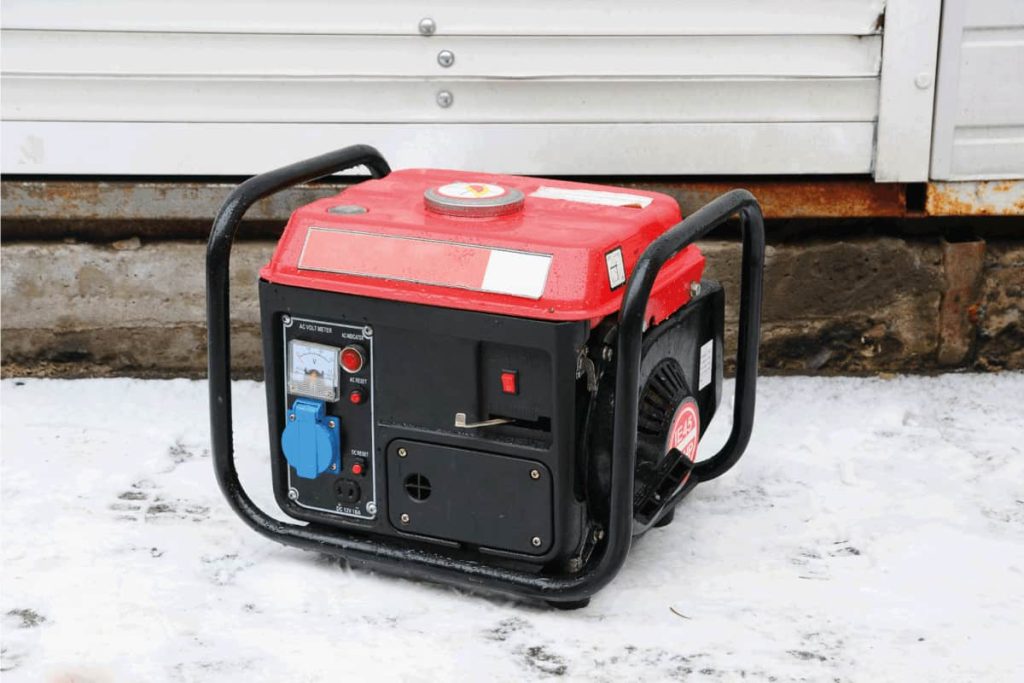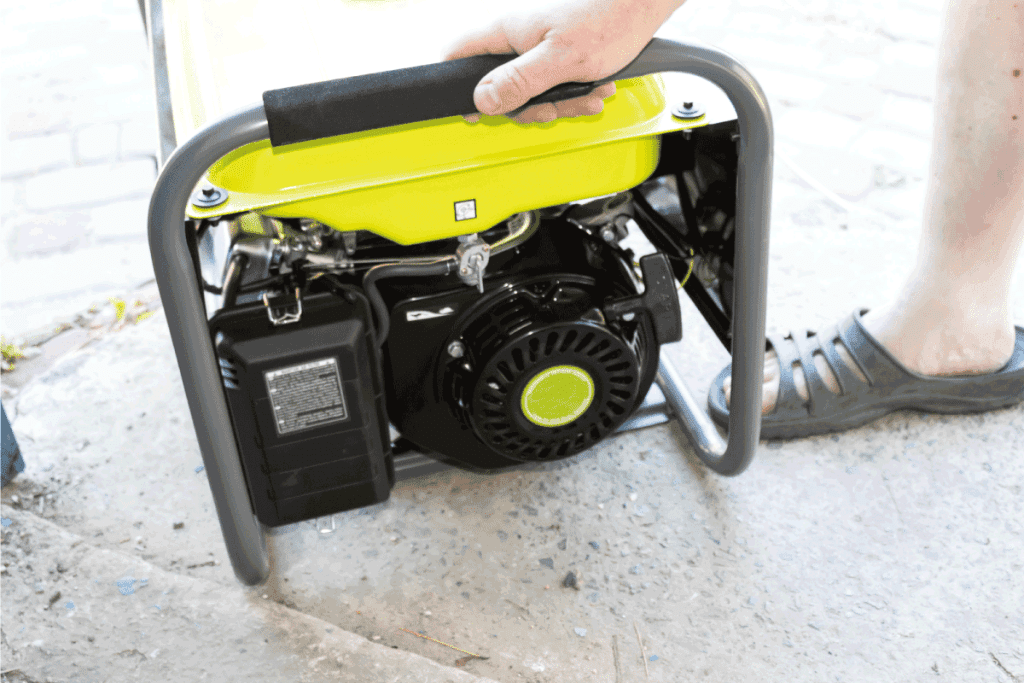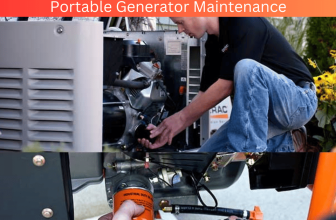In the 2020 Annual Electric Power Industry Report, consumers experienced eight hours of electric power interruption on average. Power outage is unavoidable, and a generator is necessary if you live off the grid.
It is important to pick the generator that is suitable for your power needs. If you buy a new generator for your home emergencies or RV, make sure you do the break-in procedure. This article will help you with how to break in a generator properly.
The Importance Of Breaking In A Generator
Well-maintained generators can last up to 10 to 15 years. Aside from regular cleaning and maintenance, you should pay attention to the break-in period of a new generator.

Before learning how to break in a generator, it is important to understand why you should not skip this procedure.
Breaking in your generator is important for the following reasons:
- It properly lubricates the cylinder wall and grinds them to its optimal levels.
- It will flush out all metal contamination left in the new engine.
How To Break In A Generator
Before learning the seven simple steps on how to break in a generator, it is important that you read the operator’s manual first. In the manual, you will see the recommended fuel type, amount of oil to use, and basically everything you need to do to care for it.
What You Will Need
Following the operator’s manual, here’s what you will need:
- Fuel – Pick the recommended fuel. Most generators use diesel, gasoline, and propane. Also, use a clean and recommended fuel can.
- Oil – Get the recommended oil for generators. Usually, manufacturers will recommend a 10W-30 oil for average climate temperature.
- Funnel – Use separate funnels for fuel and oil. The funnel will make the pouring a lot easier.
- User Manual – The operator’s manual will help you carry out the break-in process more efficiently. It will tell you the recommended fuel, oil, and other information on how to break into a generator properly.

7 Steps To Break In A Generator
Breaking into a new generator is not as complicated as it may sound. You can easily do it on your own if you want to. Here are the seven simple steps on how to break in a generator:
1. Lubricate
The first step you need to do is to lubricate the spark plug chamber. If you are now familiar with where the spark plug is located, refer to your operator’s manual. There should be a diagram to show you the generator’s engine.
Here’s how you do it:
- Unscrew the spark plug and carefully remove it. Add a few drops of the recommended oil into the chamber. Use the funnel if needed. Make sure that the engine cylinders are nicely lubricated.
- Slowly pull the recoil starter. Pull it ten times to allow the oil to lubricate the chamber. You are not starting the generator; you are just lubricating.
- Put back the spark plug securely.
2. Add Engine Oil
The next step in this easy guide on how to break in a generator is adding oil to the respective reservoir. The recommended amount of oil is indicated in the operator’s manual. Here’s how to successfully do it:
- Using the funnel, fill in the designated reservoir. Make sure to follow the recommended level. DO NOT overfill.
- Allow the oil to flow into the intended areas. After a few minutes, check the oil using the oil dipstick. Top it off based on the recommended amount.
3. Add Fuel
After the oil, it is time to add the fuel. Again, always refer to the operator’s manual for the right amount of fuel you need for your generator.
Fill in the fuel tank with the right amount of fuel. Make sure that it is debris-free because you don’t want to contaminate the engine. Again, DO NOT overfill.
4. The First Run
Part of the process of how to break in a generator is to run the generator for the first time for a full hour. As you do this, run the generator without any load.
Refer to the operator’s manual on how to start your generator. In most instances, you will find a switch in the generator that will allow you to turn on and turn off the generator.
For a recoil starter, you need to pull the recoil several times. As you pull the recoil, the lubrication flows further into the chambers.
Depending on the model, you may need to address the choke option once the generator has started. Refer to the operator’s manual to check the choke option.
5. First Oil Change
After running the generator for a full hour or depending on the minimum time indicated in the manual, it is time to drain the remaining oil from the tank and refill it. Make sure that the generator is turned off as you do the draining and refueling. This process is important as it will drain any residual metal debris inside the engine.
6. Second Run And Second Oil Change (Optional)
After you drain and refill the oil in your new generator, you have the option to do the second run. If you want to make sure that all metal residues are collected, you can run the generator for another full hour without any load.
After another hour of running the generator, you will need to drain and refill the reservoir before running it again with a load. Again, this step on how to break in a generator is optional.
7. Loaded Run
The last step on how to break in a generator is to operate it with a load. During this step, plug-in appliances that will draw 500 to 1000 watts of power. Allow the generator to run for about one to two hours with a load.
Depending on the generator’s model and manufacturer, you may need to run the new generator at 75% of its wattage output. Just refer to the operator’s manual to ensure the required wattage is fulfilled.

What Next?
Now that you already know how to break in a generator properly, you can now use your generator during an emergency power outage or when camping. Do not forget to pay attention to proper care and maintenance as recommended in the manual. Always remember to physically inspect the generator as well to ensure there are no loose screws, no wear in the exhaust, and no rust from water.
FAQ
How long does it take to break in a generator?
Breaking in a new generator could take up to 4 to 6 hours. This includes the lubrication process and running the generator without load. The process of breaking in a generator starts from lubricating the spark plug chamber, adding the fuel and oil, running the generator without load, draining and refilling the oil, and running the generator with a load.
Can I use a brand-new generator right away?
Yes, after filling the generator with oil and fuel, you can use the brand-new generator right away. However, you have to take note that failure to follow the steps on how to break in a generator may shorten the lifespan of your generator. It may cause undesirable damage to the engine.
Should I break in a generator more than once?
Doing the break-in process twice is not necessary. What you need is to follow the steps on how to properly break in a new generator. If you follow the steps, your generator is good to go.
However, if you are hesitant after the first run, you always have the option to run the new generator again. Doing it twice will give you the assurance that there is no metal residue in the engine.
How long does a generator need to rest?
If you are using a gasoline generator, you should let it rest for 10 to 15 minutes. You have to keep in mind that gasoline is a highly flammable material. You should turn off the generator and allow the engine to cool off before adding the fuel.
You can run your generator as long as it has enough fuel and proper lubrication. It can run for 8 to 10 hours, but remember to check the fuel and oil levels.
Do I need to turn off the main breaker when running the generator?
Yes, you need to turn off the main breaker and then turn the fuel valve on before starting the generator. Allow the generator to warm up for a few minutes. Once it has already warmed up, flip the circuit breaker on.
In terms of the extension cords, always use a heavy-duty option. And Do not overload the extension cords. Connect the appliances and devices to the generator one by one.
Conclusion
In summary, if you want your generator to last for several years, it is recommended to follow all the steps listed above. The break-in period and the process takes a few hours and requires a lot of effort. But, just follow the steps. It will be worth it.




